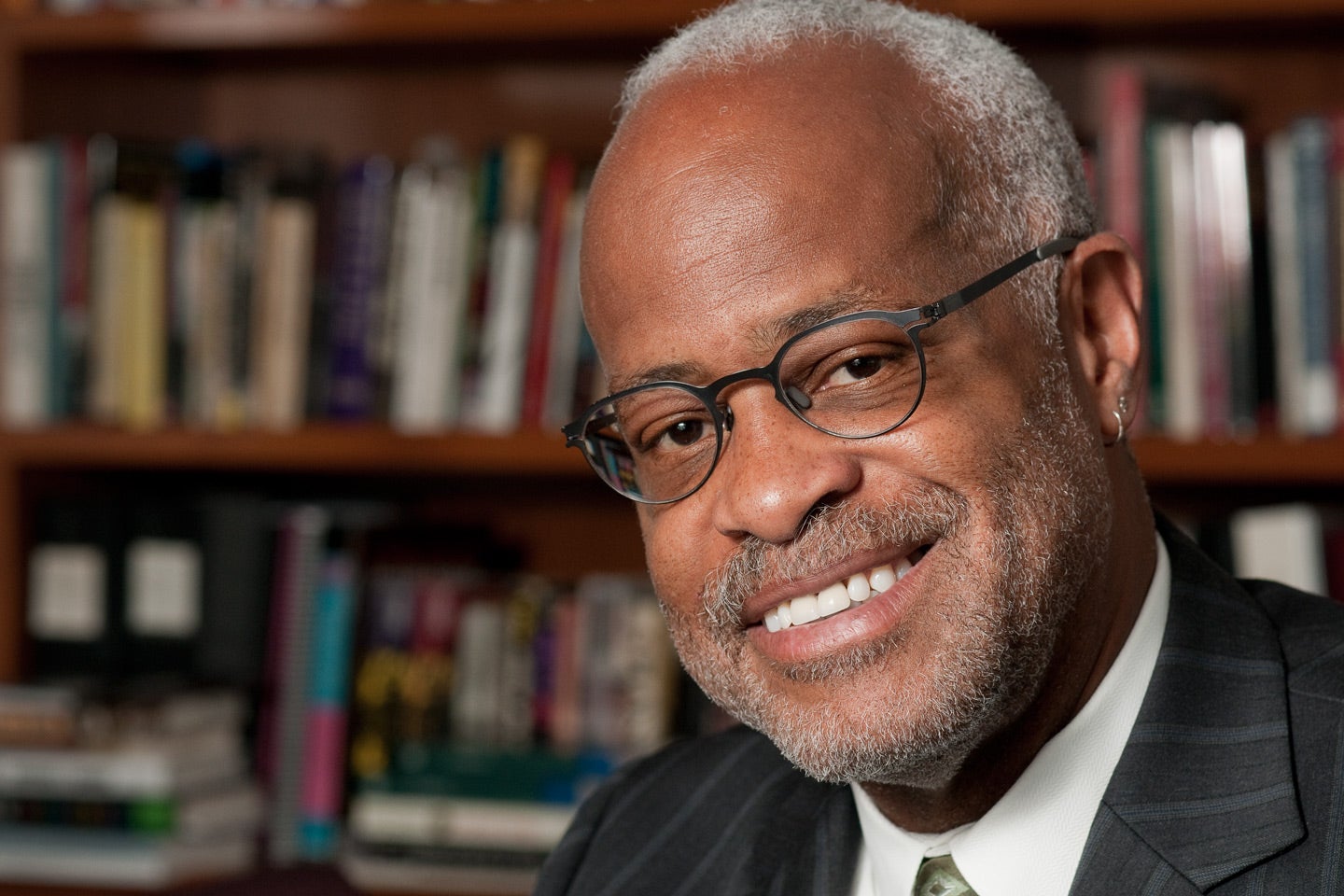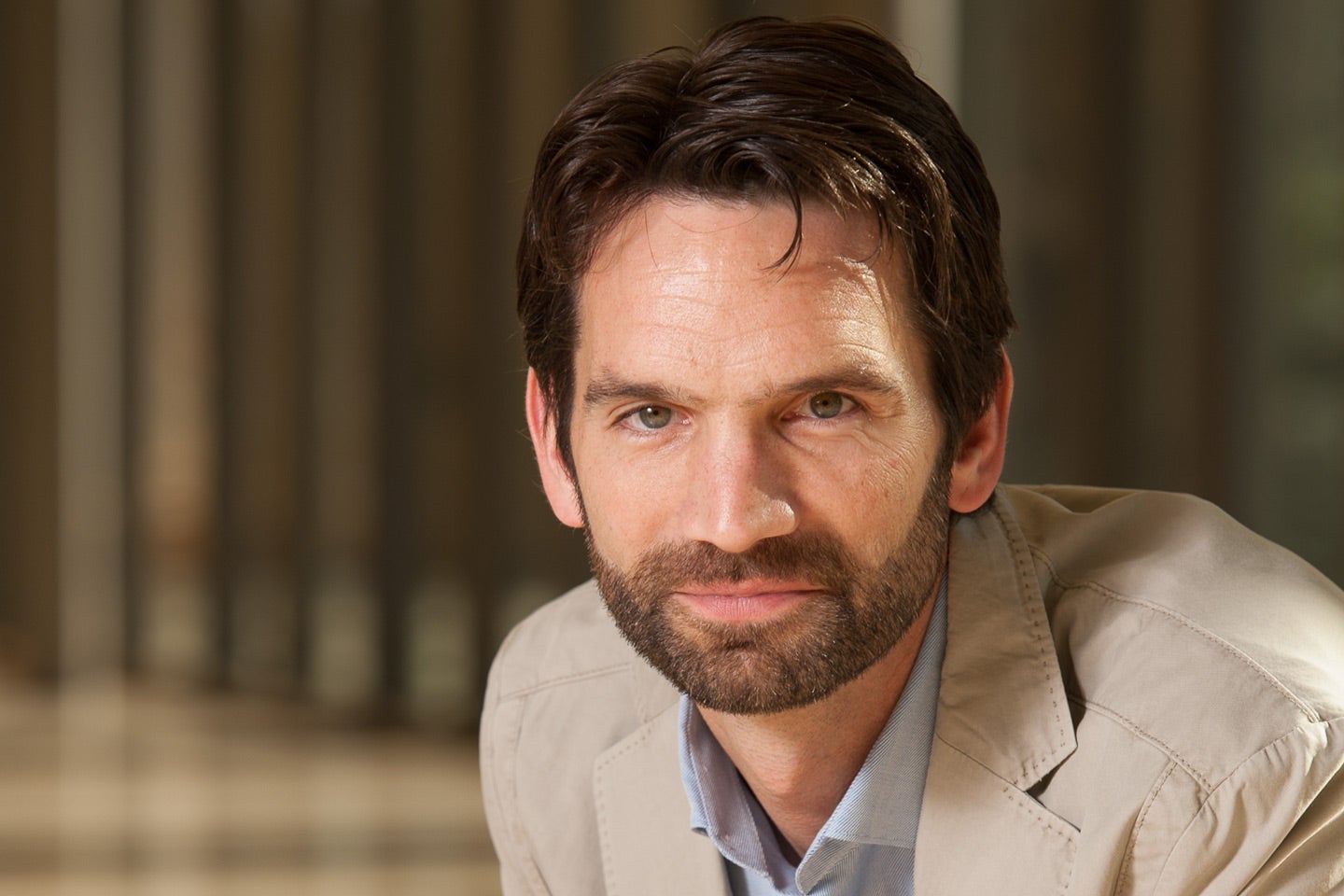When Harry J. Elam Jr. began his career at Stanford 26 years ago in the Department of Drama, as it was known then, the Dance Division had not yet joined the department, Roble Gymnasium was still an athletics facility and the arts district was years away from conception. His office in Memorial Auditorium was literally a converted phone booth – one of several that were adapted for faculty in a department that, as Elam puts it, was not even sure of its future: In his first few weeks on campus, the university was actually considering eliminating the Department of Drama altogether. The thinking went something along the lines of: Harvard did not have one, so why do we?

Harry Elam has seen the university’s commitment to the study and practice of the arts make tremendous progress in the 26 years since he began his career here in the Department of Drama. (Image credit: L.A. Cicero)
How thinking about the arts has changed since then at Stanford!
Elam has seen the university’s commitment to the study and practice of the arts make tremendous progress – particularly in the last 10 years under the Arts Initiative – and now he is positioned to help take the arts to the next level in his expanded roles as the vice president for the arts and senior vice provost for education in the Office of the President and Provost. Partnering with Elam in the effort to advance the arts is Matthew Tiews, in an elevated role as associate vice president for the arts.
Working together with colleagues across the arts and beyond the campus, Elam plans to leverage all that the Arts Initiative delivered in terms of new arts facilities and faculty, expanded undergraduate and graduate arts programs, and strong interdisciplinary relationships forged on campus to realize a dynamic vision for the future. Specifically, Elam will oversee the strategic future of the non-departmental arts programs, including the Anderson Collection, Cantor Arts Center and Stanford Live/Bing Concert Hall, as well as the Stanford Arts Institute and the Institute for Diversity in the Arts.
Elam brings a powerfully distinctive experience with both the study of and practice in the arts to his new position as vice president. Concurrent with his two new leadership roles, Elam is the vice provost for undergraduate education and a professor of theater and performance studies. He earned his bachelor’s degree from Harvard College and his doctorate in dramatic arts from the University of California, Berkeley. In addition to his scholarly work, he has published seven books on African American and ethnic theater and performance as well as edited the field’s top journal.
Elam has also directed professionally for more than 20 years, garnering acclaim for his award-winning productions at TheatreWorks and elsewhere. Mentoring student development in the arts remains a priority for Elam as well, reflected, most recently, in his work as artistic director for the Department of Theater and Performance Studies production of Spring Awakening, The Musical in the newly renovated Roble Studio Theater.
Big, bold, brave
Members of the Stanford arts community have been invited by President Marc Tessier-Lavigne, Elam and Tiews to be “bold” and “brave” and to “think big” as they imagine the next steps for the arts. In his conversations with the arts community over the next few months, Elam will be asking questions that hint at the scale and scope of this ambition, including “How do we make Stanford as recognized for the arts as it is for technology?” and “How do we make Stanford a vibrant arts destination for students who want to practice the arts, for researchers who study it and for public engagement?”
Elam, along with Tiews and members of the Stanford arts community, will collectively undertake the development of a strategic plan for the arts that both informs and will be informed by the long-range planning process involving the entire university community.
They will build on the already-impressive list of accomplishments under the Arts Initiative, which, to name a few, include:
- Development of the arts district with three new arts facilities: the Anderson Collection, Bing Concert Hall and the McMurtry Building for the Department of Art and Art History
- Renovation of historic Roble Gym, now the home of the Department of Theater and Performance Studies and the one-of-a-kind Arts Gym
- Establishment of the Stanford/Warner Music Group Leadership Initiative
- Appointment of distinguished arts faculty members
- Increased graduate fellowships
- Increased support for student engagement with the arts, with Stanford now supporting over 100 student arts groups
- Creation of the interdisciplinary honors program in the arts that allows students from any major to complete a senior capstone project in the arts and receive university honors with their undergraduate degree
- Increased number of visiting artists
- Expansion of student grants for arts research, projects and performance
With Elam’s leadership as vice provost for undergraduate education dovetailing with the Arts Initiative, Stanford also instituted the Creative Expression requirement for undergraduates, developed the arts curriculum for Stanford in New York and launched ITALIC, the arts-minded, residence-based academic program for first-year students.
Both Elam and Tiews see these accomplishments as inspiration and momentum for more positive change – not a reason to pause, even for a second. In fact, activities already underway in the next phase for the arts at Stanford include renovating Frost Amphitheater, which promises to activate the unique and beloved outdoor performance space; further developing the Creative Expression course list for all undergraduates; and concluding the search for the next director of the Cantor Arts Center, one of the most visited university art museums in the country.
Arts leap
Three themes that have taken root in the arts community, and will continue to be cultivated in the leap forward, are: every Stanford student; only at Stanford; and moving Stanford forward.
The theme “every Stanford student” means that every Stanford student will have opportunities for frequent and meaningful engagement with the arts. “Only at Stanford” is generating pioneering programs in the arts, and “moving Stanford forward” is the commitment to engage the top creators, leaders and scholars in the arts.
“One of the big changes that I’ve seen in the arts on campus is the mindset. This is now a place where the students and faculty appreciate the acceleration of the arts. Morale has improved and there is a heightened sense of just how enormous the possibilities are,” said Elam. “Last year at the annual Party on the Edge hosted by the Cantor and the Anderson Collection, for instance, it was noted that the arts are no longer on the edge. They are where they should be: at the center of campus life.”

Matthews Tiews, recently named associate vice president for the arts, has worked to implement the university-wide Arts Initiative since 2010. (Image credit: L.A. Cicero)
Tiews, who has worked to implement the university-wide Arts Initiative since 2010, first as executive director of arts programs, then as associate dean for the advancement of the arts and now as associate vice president for the arts, concurs: “Thanks to the Arts Initiative, we’ve come so far and we can take it further. There are so many supportive faculty, students, staff and alumni that are encouraging us to think big and move forward. It’s very exciting. Harry has been an incredible colleague and leader in the arts on campus and I’m very much looking forward to working with him in his new role.”
In Tiews’ effort to place the arts at the core of a Stanford education and to make the university a leader in the arts nationwide, his duties have included developing Stanford’s arts district, creating meaningful arts engagement for all Stanford students, integrating the arts throughout the university and coordinating arts activity across departments and programs. He is responsible for extracurricular arts programs, arts facilities and financial oversight of non-departmental arts units; he also worked within the dean’s office to facilitate arts planning and implementation.
Tiews was formerly at the Stanford Humanities Center, where he oversaw programming and operations, and was particularly active in developing collaborations bringing together the arts and the humanities. Prior to that, he served at the Townsend Center for the Humanities at the University of California, Berkeley, at the Stanford Humanities Laboratory and as managing editor of the journal Modernism/modernity. Trained in acting and piano performance, Tiews holds a bachelor’s degree from Yale and a doctorate from Stanford in comparative literature. He is co-editor of the multidisciplinary publication Crowds (Stanford University Press, 2007), which won the Modernist Studies Association book prize.